Editor’s Note: In anticipation of George Hand’s triumphant return to SOFREP, we are revisiting this piece from the archives. Lots of good stuff in here. Enjoy! –GDM
Rona has a slew of folks rethinking their home security. During times of crisis, it is human nature to pull in and harden our security perimeters. People who have children, spouses, BFFs… and people who are human all become stalwart aficionados of their personal well-being and that of their loved ones — shame on our passion; all of us!
I do in no way ever presume to delineate responsibility roles to genders. Gone are the times when during a crisis the men would run outside and start hammering planks over doors and windows, while the women stayed inside canning produce. Women today are getting frogish and taking charge; men are trending to gummy bear frappucinos, boy hair-buns, and shopping online for skinny jeans. Women, don’t take notes for your “men;” get on this yourselves!
My writing task, as assigned by my monstrously cruel and overbearing supervisor Stavros Atlamazoglou, is to plainly describe the defensive security measures I have in place in my own home. My First Daughter and I have been living in this house since mid-December of just last year — so not quite five months.
What follows is a virtual tour of my security config; please excuse the mess!

I mentioned “hardening” home security. What gauges whether a house is hard or soft? I do. I’m the one who is calling a home security configuration hard, medium, or soft soles-ly based on my druthers as well as my experience with protecting myself against adversaries. I’m not calling my house ‘hardened’ security. I reference Ft. Knox, the Alamo, and Omaha Beach for hardened security.
Soft security? I would call a tiki hut, birthday bouncy house, or a picnic pavilion soft security. So, I assess that mine is a solid security configuration that gives me peace of mind in an environment that I deem currently to be condition yellow — we’re all not gonna die just yet.
Editor’s Note: In anticipation of George Hand’s triumphant return to SOFREP, we are revisiting this piece from the archives. Lots of good stuff in here. Enjoy! –GDM
Rona has a slew of folks rethinking their home security. During times of crisis, it is human nature to pull in and harden our security perimeters. People who have children, spouses, BFFs… and people who are human all become stalwart aficionados of their personal well-being and that of their loved ones — shame on our passion; all of us!
I do in no way ever presume to delineate responsibility roles to genders. Gone are the times when during a crisis the men would run outside and start hammering planks over doors and windows, while the women stayed inside canning produce. Women today are getting frogish and taking charge; men are trending to gummy bear frappucinos, boy hair-buns, and shopping online for skinny jeans. Women, don’t take notes for your “men;” get on this yourselves!
My writing task, as assigned by my monstrously cruel and overbearing supervisor Stavros Atlamazoglou, is to plainly describe the defensive security measures I have in place in my own home. My First Daughter and I have been living in this house since mid-December of just last year — so not quite five months.
What follows is a virtual tour of my security config; please excuse the mess!

I mentioned “hardening” home security. What gauges whether a house is hard or soft? I do. I’m the one who is calling a home security configuration hard, medium, or soft soles-ly based on my druthers as well as my experience with protecting myself against adversaries. I’m not calling my house ‘hardened’ security. I reference Ft. Knox, the Alamo, and Omaha Beach for hardened security.
Soft security? I would call a tiki hut, birthday bouncy house, or a picnic pavilion soft security. So, I assess that mine is a solid security configuration that gives me peace of mind in an environment that I deem currently to be condition yellow — we’re all not gonna die just yet.
Outer Security Perimeter — No-Man’s Land
Oh, hellz yeahz this is important! It’s great to be safe and snug inside your house because you own the interior. But, is it ok with you if you don’t even own your front porch? Just because your door is locked, are you perfectly comfortable with the possibility that someone is right outside your door standing on your front porch studying your entrance?
Opposing trench lines during WWI had a zone of separation between them termed No-Man’s Land. That was a guarded observable parcel that an adversary had to cross to be able to touch the tip of your nose with his index finger. No-Man’s Land was a stand-off security perimeter that protected both trench lines from each other — interesting.
Lights and Cameras
Before you race off to rent a backhoe and dig a moat or a binju ditch, let’s consider what makes more realistic sense for a No-Man’s Land for the average citizen. We want something that holds an assailant at bay, at a distance from your front porch — a deterrent.
Consider this: every side of your house that has an exterior door has a light fixture covering the door. The front-line no-brainer is to swap your current functional, yet elegant and glamorous, light fixture with an obnoxious high-lumen/candle power double floodlight! I use 20,000 lumens, but they come even higher.
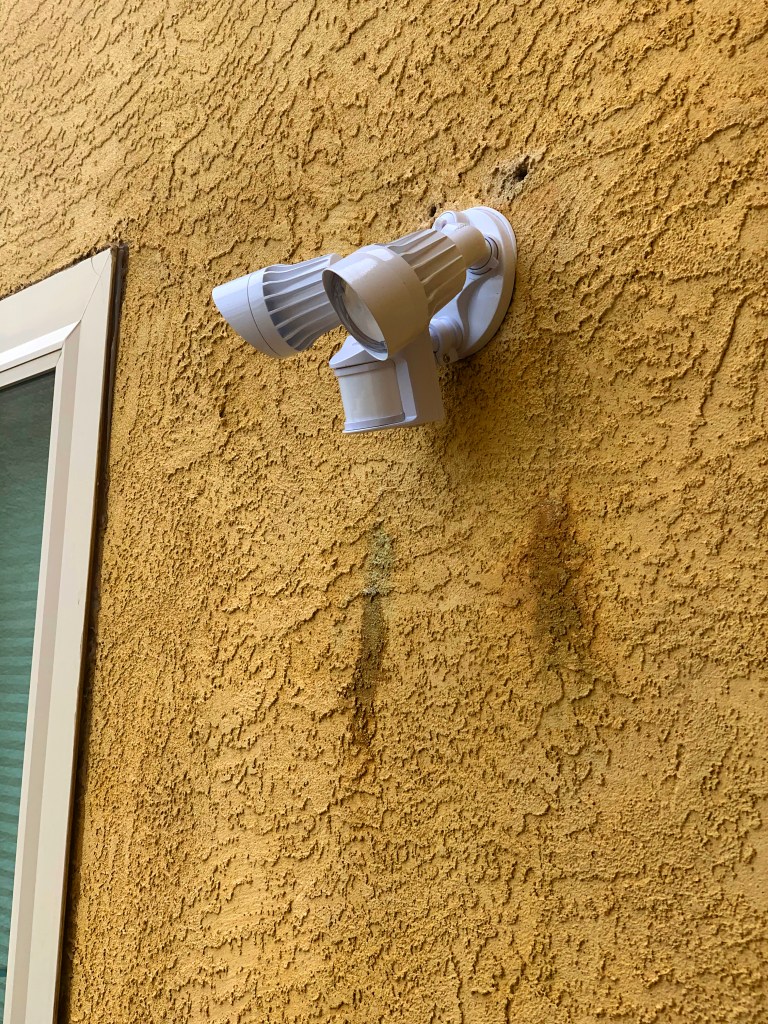
Flood sets such as these when working in conjunction with always-on, always-recording Closed Circuit TV (CCTV) cameras can perform wonders in creating the all-important No-Man’s Land zone of separation around your home.

A basic set such as the one seen above comes with four decent resolution low-light capable, IR light-projecting cameras with motion detection. It comes with an always-on recording deck that runs in continuous recording mode over a set number of days. Although it is not for the faint of heart or stomach to install, yet with some honest spirited effort and someone to hold your beer you can affect a positive outcome.
In keeping with motion-detecting and recording cameras, I also have the Ring Doorbell system installed at my front door. It too is a low-light, high-resolution motion-detecting camera that has the ability to automatically record. As an added benefit, it pops up on my iPhone and Laptop computer anytime it is activated.
The Ring Doorbell system also offers the ability to manually ‘draw’ the trip zone for your motion detection. I don’t mind telling, mes amis, that this feature is sweet. It lets you draw a zone in front of your door, and block out things in the background such as a street with cars on it that would be setting your detector off falsely all (damned) day and night.
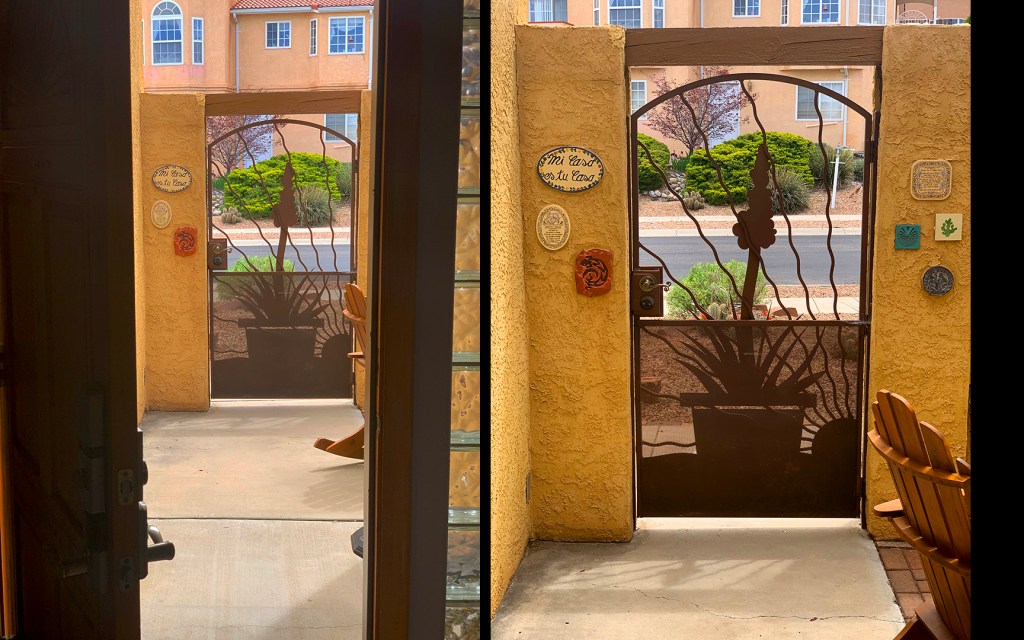

One of the greatest features of my house, in the realm of security, is the enclosed porch with a gate that is strong and can be shut and locked. Not only does it provide the No-Man’s Land stand-off buffer, but, when left unlocked for deliverymen, packages can be securely and out of sight set in. I have not lost a single delivery since I moved here.
Door and Window Motion Detectors
All exterior doors and windows in the Hand Clan‘s headquarters have motions detectors on them that automatically transmit a visual and audio signal to our iPhones. It is amazingly comforting to me to hear the tone and see the notice of the external doors opening and closing as the day goes on. It is mostly the downstairs back door that gets the most use as the First Daughter has her gardens out there.
I use a system called Notion that was given to me free of charge by the company I have my homeowner’s insurance with. I liked the demo model so much that I purchased enough sensors to cover my whole house.
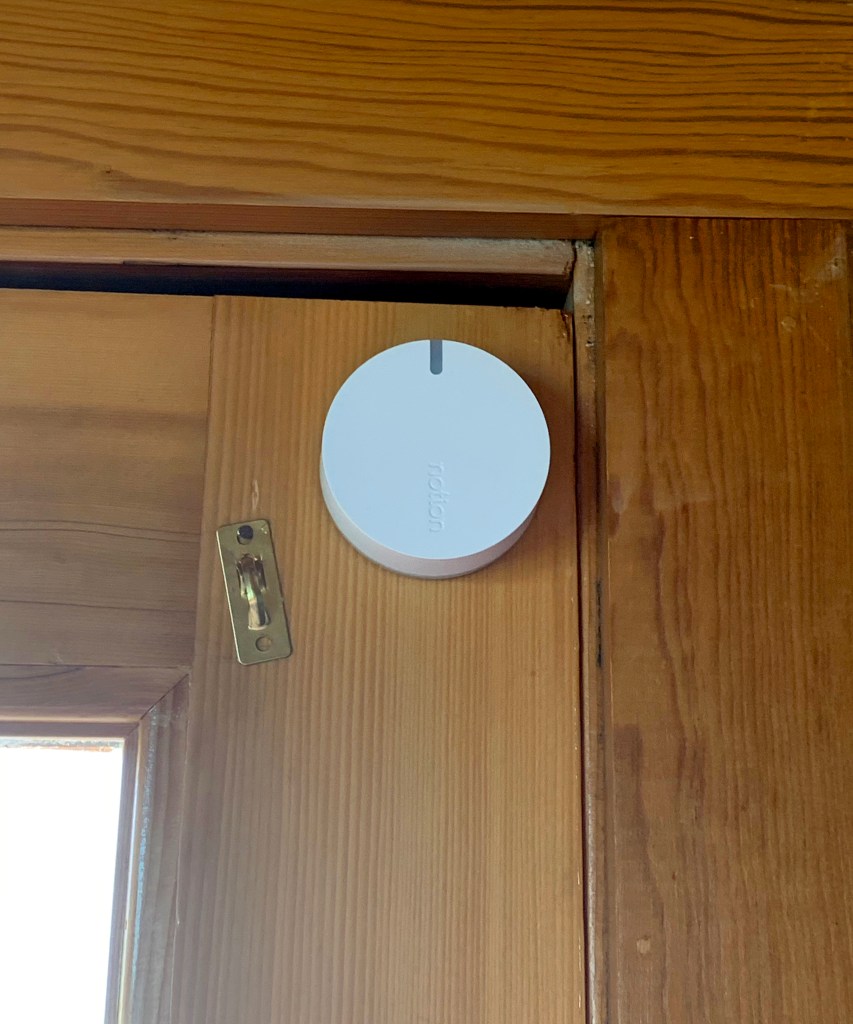
In the photo above, a Notion motion sensor is at work on an exterior door that opens out onto a small balcony. Notion sensors also work as water accumulation alarms and as extensions to fire alarms. A fire alarm’s siren will trip the detector and send a notice to my cell phone through the cloud. So I can literally be anywhere in the world and know my house is burning down. I keep one under my hot water heater in the garage in anticipation of a flood warning that can incite me into mitigating action.

Above is another Notion sensor at work on my bedroom window. Yes, I named the sensor geo on my home’s Notion network. The white rectangle is the magnet that the sensor uses to form a magnetic link that breaks when the window is opened.
Due to the design of my pane, I was not able to get the Notion magnet to within the 1/2 inch required distance from the sensor, so I bolstered the magnetic field with this silver rare Earth disk magnet. The two combined provide sufficient magnetic power to close the circuit in the sensor and create the breakable link seal for the window.
Barriers and Locks
I use cipher locks on every door that opens to the outside or even has the potential to open to the outside; that is, even the door leading from the garage to the house has a Kwickset cipher lock and deadbolt on it. There is also a personnel door that is separate from the automatic opening garage door. It leads outside to the east side of my enclosed yard — that gets a cipher lock on it as well — not messing around.
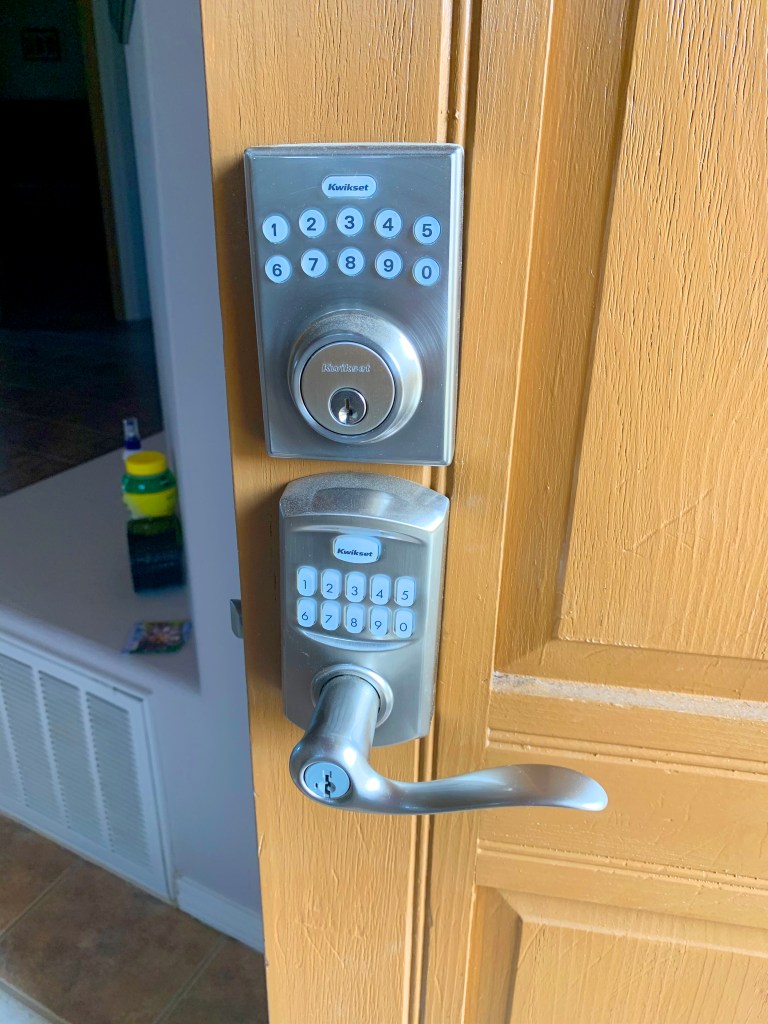
All my cipher locks have handles, rather than knobs, which light up at night. I consider the lever handle a security feature and prefer it over a doorknob, as it can be opened with a knee or an elbow when your hands are full, letting you get in faster. Typically, a house door leading to the garage will have this type of handle rather than a knob, as it is recognized that people exiting their car from the garage are most likely to have their hands full. That is not a HUD building code but a thoughtful feature.
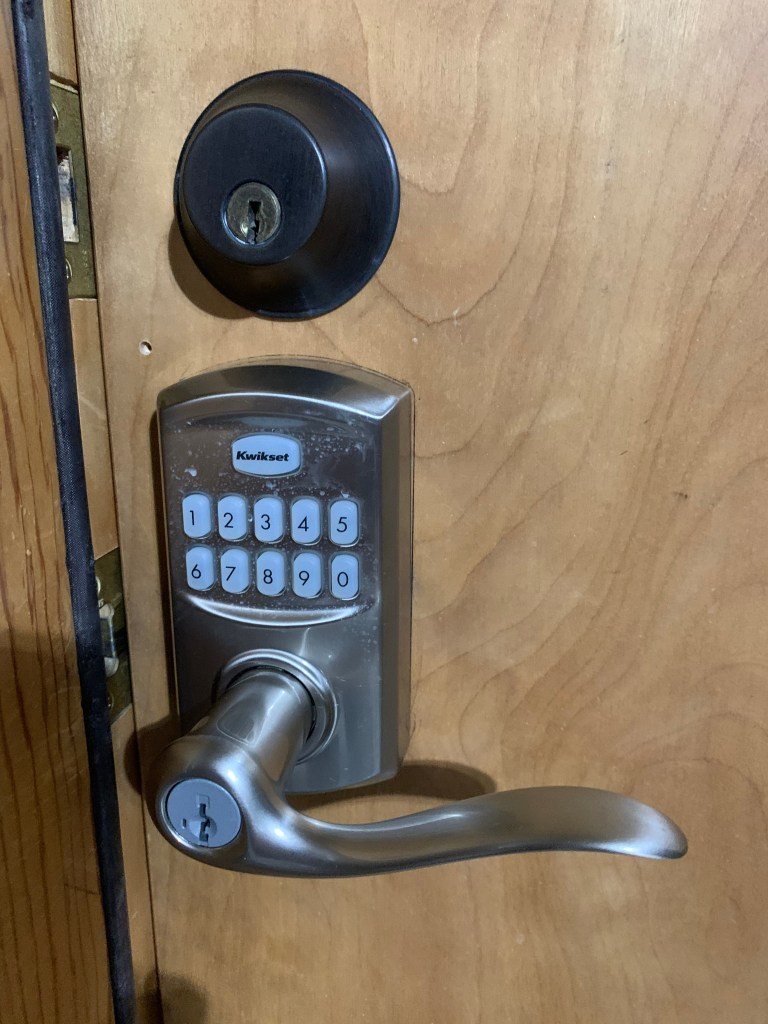
A super feature on these cipher locks is that there is a lock bypass switch on the inward-facing half of the lock that allows you to essentially turn off the auto-locking service if you are running in and out a lot during the day, such as when I am working in my garage woodshop.
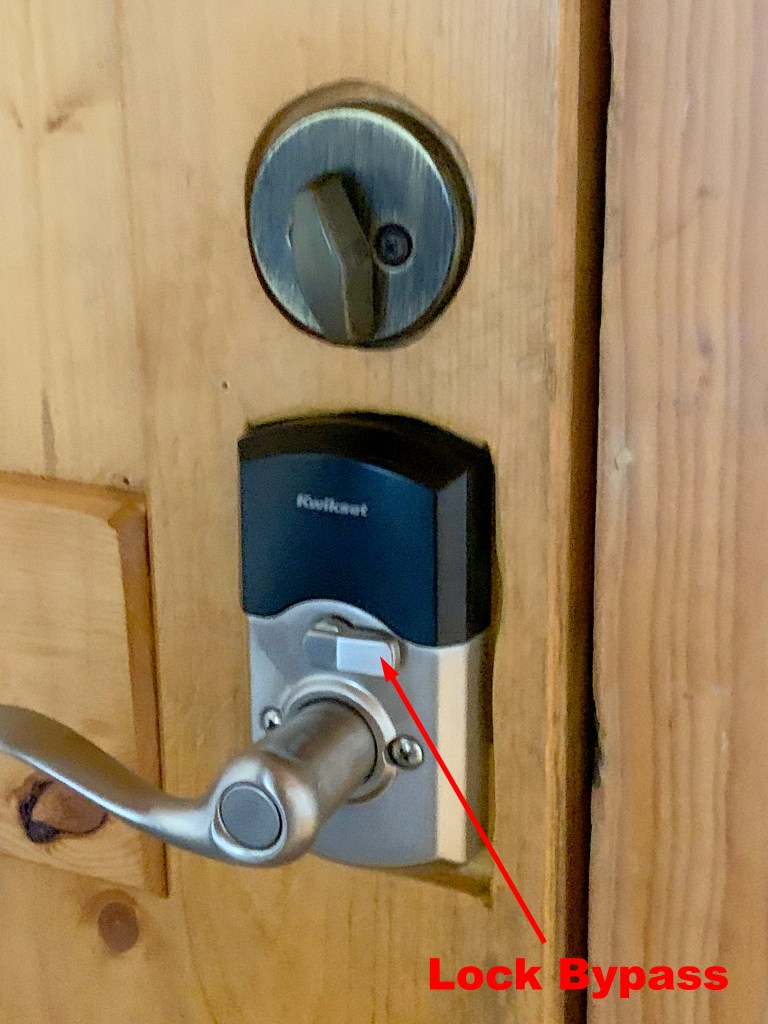
Smart Home Device Configuration
I can remotely turn on any light in my house from anywhere in the world if I have an Internet connection. Why would I want to? I certainly would not, but the First Daughter can turn on the front porch light from her car about five minutes prior to reaching the house so she doesn’t have to fumble about in the dark — safety/security.
I don’t like walking into dark rooms, like the garage, at night. I can make that calamitous shrew Alexa turn the garage light on before I even open the door by requesting in a normal tone of voice: “Alexa, turn on garage light,” and it will turn on.
I can walk through my house verbally switching on all lights in front of me and extinguishing the ones behind me. Why? Welp, because I am a huhangus swine and a lazy son of a bitch. It’s also a matter of security. The First Daughter can turn the downstairs lights from her desk upstairs before even getting up. She can check the integrity of the doors and windows before venturing down there to turn in for the eve. She can even turn on a space heater or electric blanket in advance so it is warm by the time she gets down there (now, that’s just a comfort thing).
I use Amazon Alexa to integrate and verbally control smart devices in my home that are associated with the app Smart Life. Here’s how it all looks on my iPhone:

Another free application we find very useful for security is the Zello app. It allows us to talk real-time anywhere in the world like using a walkie-talkie. I used the Zello app extensively when working street operations for Counter Human Traffic.



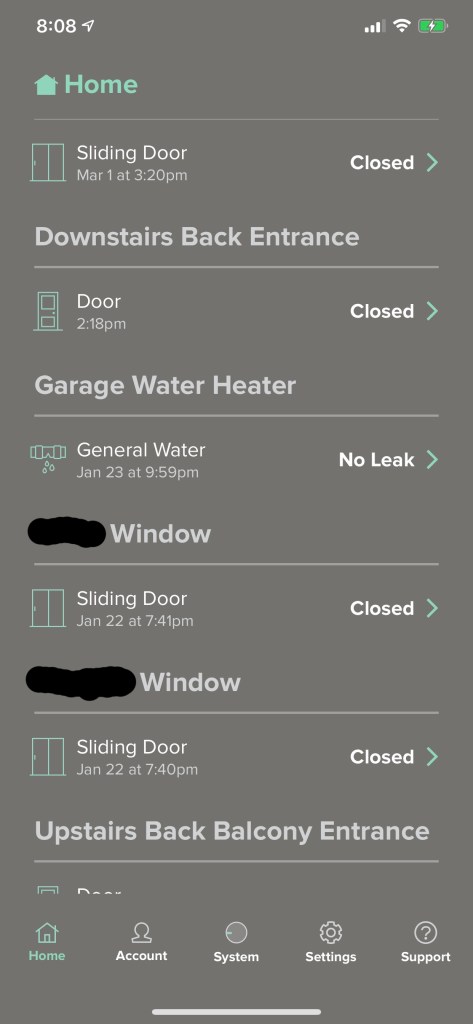
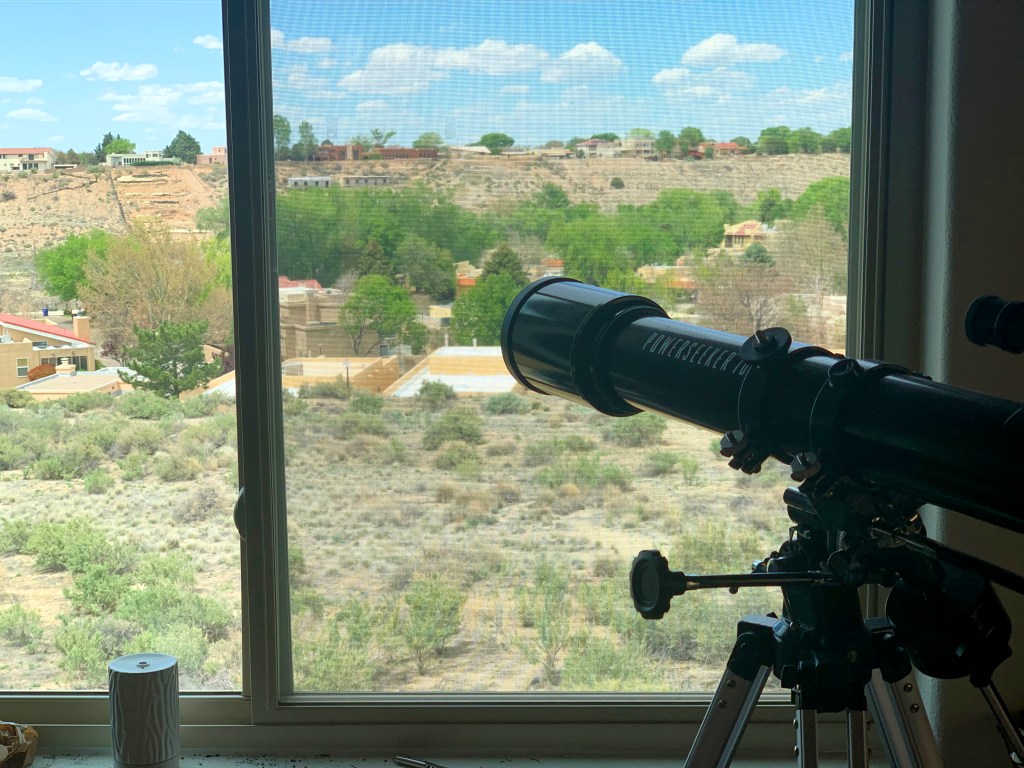
The view out of my back windows. I am fortunate enough to have an actual No-Man’s Land behind my house — a couple of hundred meters of a clear field of observation between my trench and the enemy avenue of probable advance. On the window ledge just out of sight to the left are a pair of Leupold binoculars with an incremented range reticle that I can use to call for and adjust supporting indirect fire from the NM National Guard Post Albuquerque, aha.
I’ll confess to you that my laundry dryer is also a smart dryer that connects to my network allowing me to configure the settings remotely, though I do not consider that a security measure and have not relented to that realm of laziness — perhaps in another life.
“But if your devices connect to the Internet somebody can hack into them,” you might say.
I have accepted two axiomatic truths in my life:
1) You can’t force a person to learn a foreign language if they don’t want to learn it.
2) You can’t convince an analog person that the digital Internet isn’t trying to steal their luggage at the airport… Don’t try to teach a pig to sing; first of all, you’re wasting your time, and secondly, you’re irritating the pig.

I would gladly sell the Internet protocol (IP) path to my porch light for $200.00. They can wipe themselves out turning it on and off and snickering. When I’m out of cash I’ll re-register the porch light smart switch on my network and sell the new path to the next pink-hat hacker extraordinaire. SOFREP brother Mason Flake am I right?
“Dad, the light in the laundry room is turning on and off by itself!”
“Jesus Paste, kids… back up all your things — we’re moving to Texas!!”
“Oh my stars… someone hacked into the lamp on my bedside table and emptied my bank accounts.”
“Fiddlesticks, a terrorist pathed through my bathroom light switch into the Pentagon and launched a Pershing missile at my house — I gotta go, ma!”
The Internet, mes amis, is like the front door to your house. Leave your door open and walk by it naked if you dare. If you want to preserve your modesty, you can just… CLOSE YOUR COCK-A-DOODIE DOOR!
By Almighty God and with honor,
geo sends
—
** To learn more about how preppers defend their homes, click here.




























COMMENTS
There are on this article.
You must become a subscriber or login to view or post comments on this article.